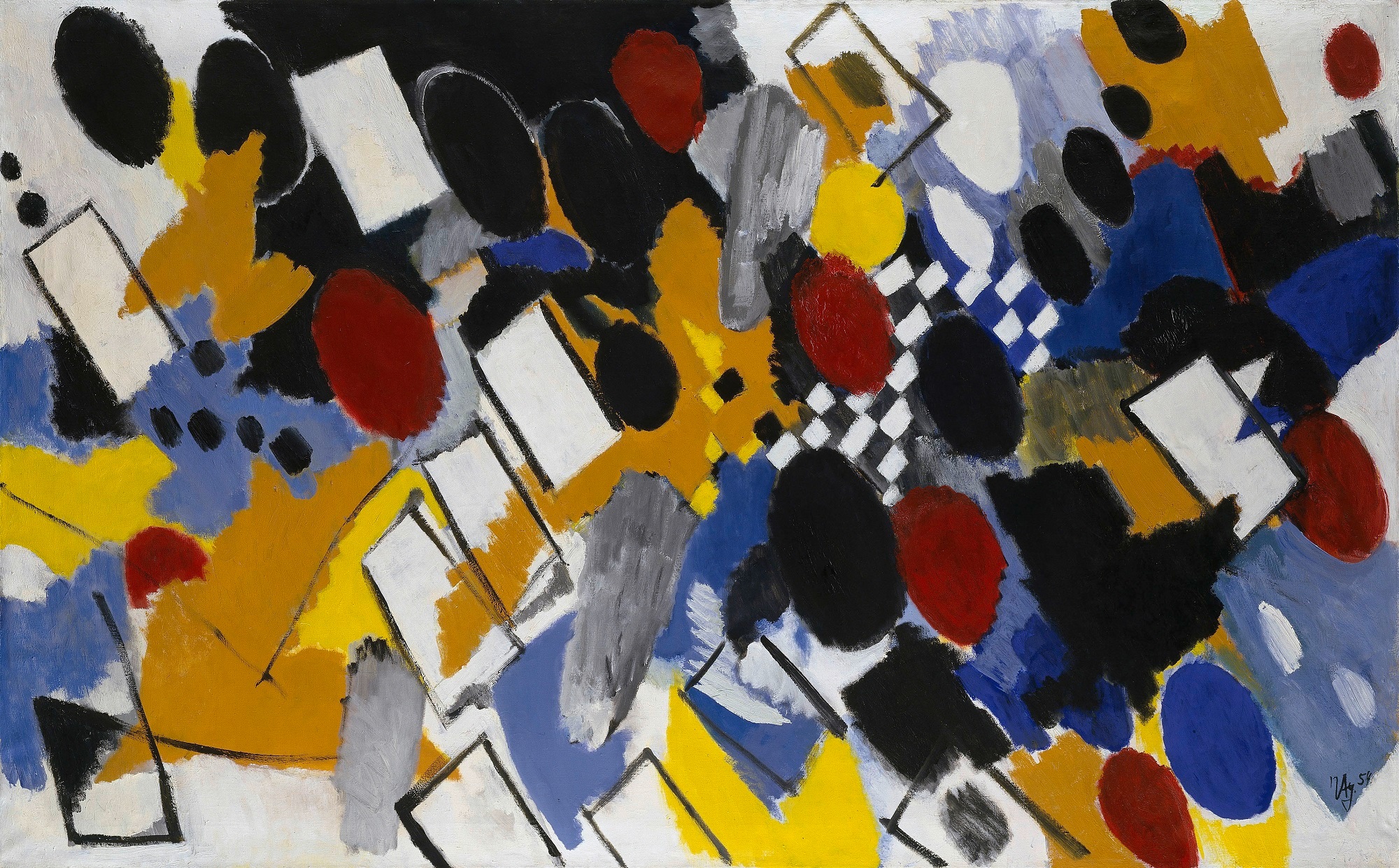Ernst Wilhelm Nay
Retrospective
16 Sep 22 — 5 Feb 23
Ernst Wilhelm Nay, African, 1954. Museum Wiesbaden © Ernst Wilhelm Nay Foundation, Cologne ⁄ VG Bild-Kunst, Bonn 2022, Photo: Museum Wiesbaden / Bernd Fickert
As an artist repeatedly featured at the early editions of documenta, the German painter Ernst Wilhelm Nay (1902—1968) became internationally famous after WWII. His striking visual vernacular formed a bridge between the figurative expressionism of prewar Modernism and the gestural abstraction of the postwar period.
It is the first time this important artist has ever featured in a solo exhibition at Museum Wiesbaden and, befitting the occasion, it will be a comprehensive retrospective of Nay’s broad oeuvre. On view are not only the famous Lofoten paintings, as well as the Disc and Eye Pictures, but also the Hecate and Fugal Pictures, which were created in the Rhine-Main region. The retrospective will make these creative periods — usually perceived as self-contained and homogenous — tangible as an organic, interlocking body of work spanning many decades.
The forces of nature
Dune pictures, fishing pictures and Lofoten pictures
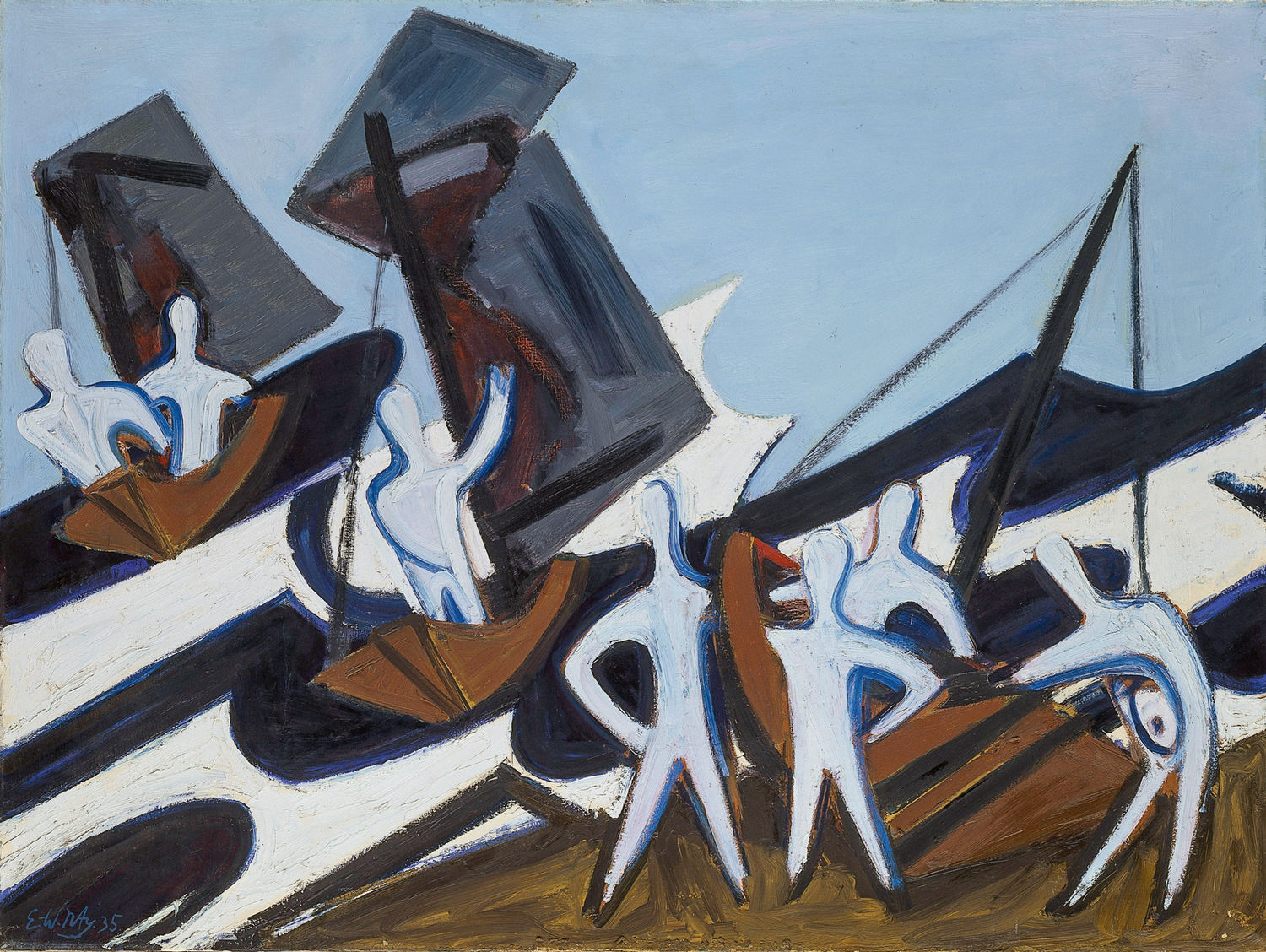
Around 1932, Nay wanted to trace the cosmic connections between man and nature in his art — he himself spoke of a "mythical bond" — behind the outward appearance of things.The beginning was made by some abstracted animal paintings, in which he sought, for example, to connect a cow, a calf or an elk's head with their natural environment through a net-like system of planes and lines. When he encountered the original life of the fishermen at the Baltic Sea around 1935, man increasingly moved into the center of his art.
Nay expressed his involvement in the dynamics of heaven and earth, of storm and sea, with the powerful rhythm of the colors. The importance of the colors for his painting grew more and more — only the forms emerged from them. As early as 1930, during a stay on Bornholm in the fishing village of Tejn, the archaic nature of life by the sea — the interweaving of sky, ocean, earth and man on a universal level — may have flashed up in his mind as a solution.
The support of the Lübeck museum director Carl Georg Heise and the painter Edvard Munch enabled him to make his first trip to the Norwegian Lofoten Islands in 1937. Here Nay experienced more than ever the intertwining of man with nature. In his paintings, he simplified his figure almost to a sign made of color: it merges with the crystalline forms of the rocky surroundings and grows together with them to form a great whole.
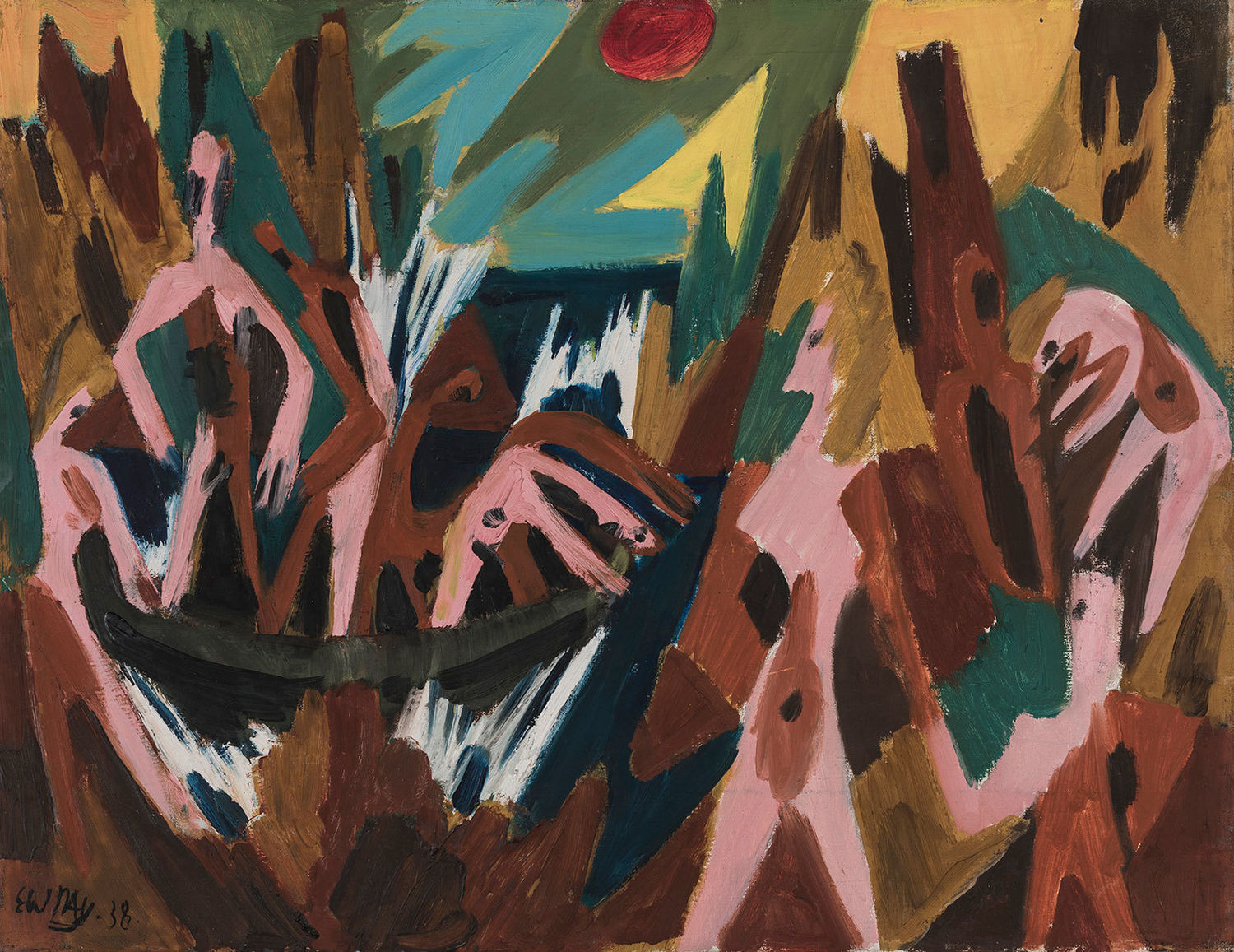
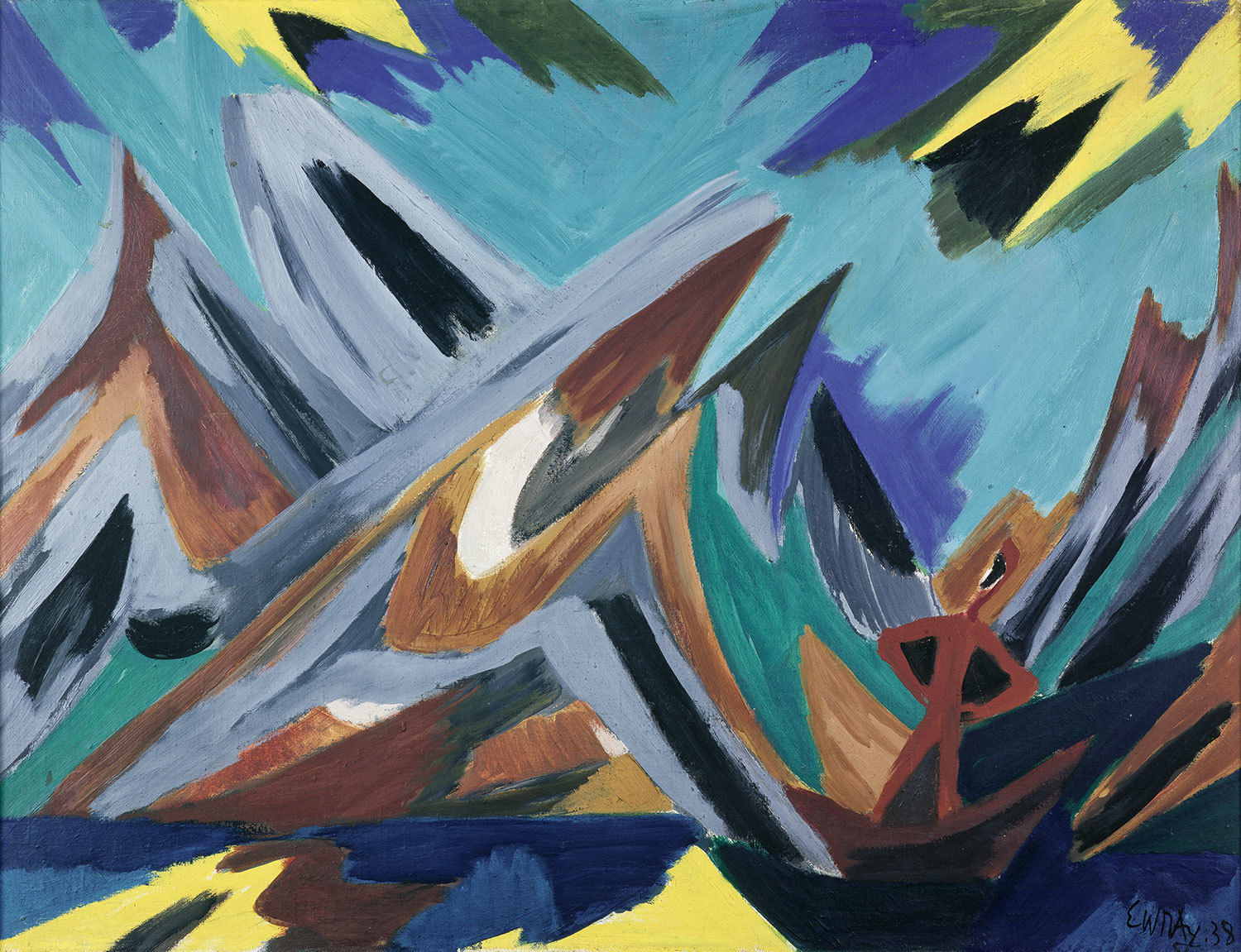
War and peace
France and Hekate pictures
In December 1939 Nay began his military service. Stationed as a soldier first in Schwerin (an der Warthe) and then in southern France, he was rarely able to work artistically; Only from 1942 in Le Mans did he gain more freedom.
He established German and French contacts, also with the art friend Pierre Térouanne. He left his studio to him and provided him with painting materials: the works created here — an enchanted garden, a communal apple harvest, or a united family — at first seem disturbingly idyllic, but in their fragility of crystalline-looking formal language and flashing color contrasts they always carry the transience of this paradise, which is nevertheless only superficial.
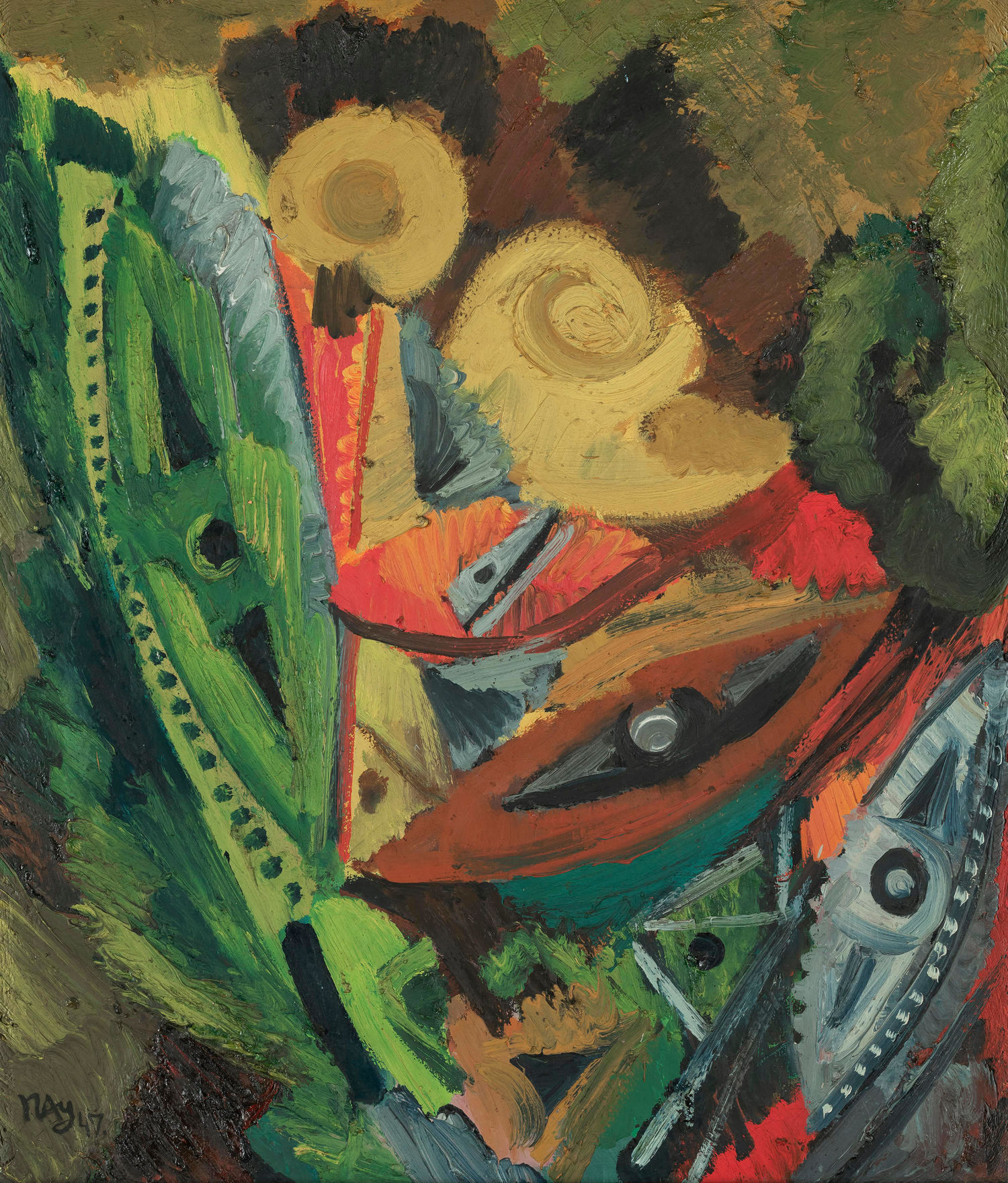
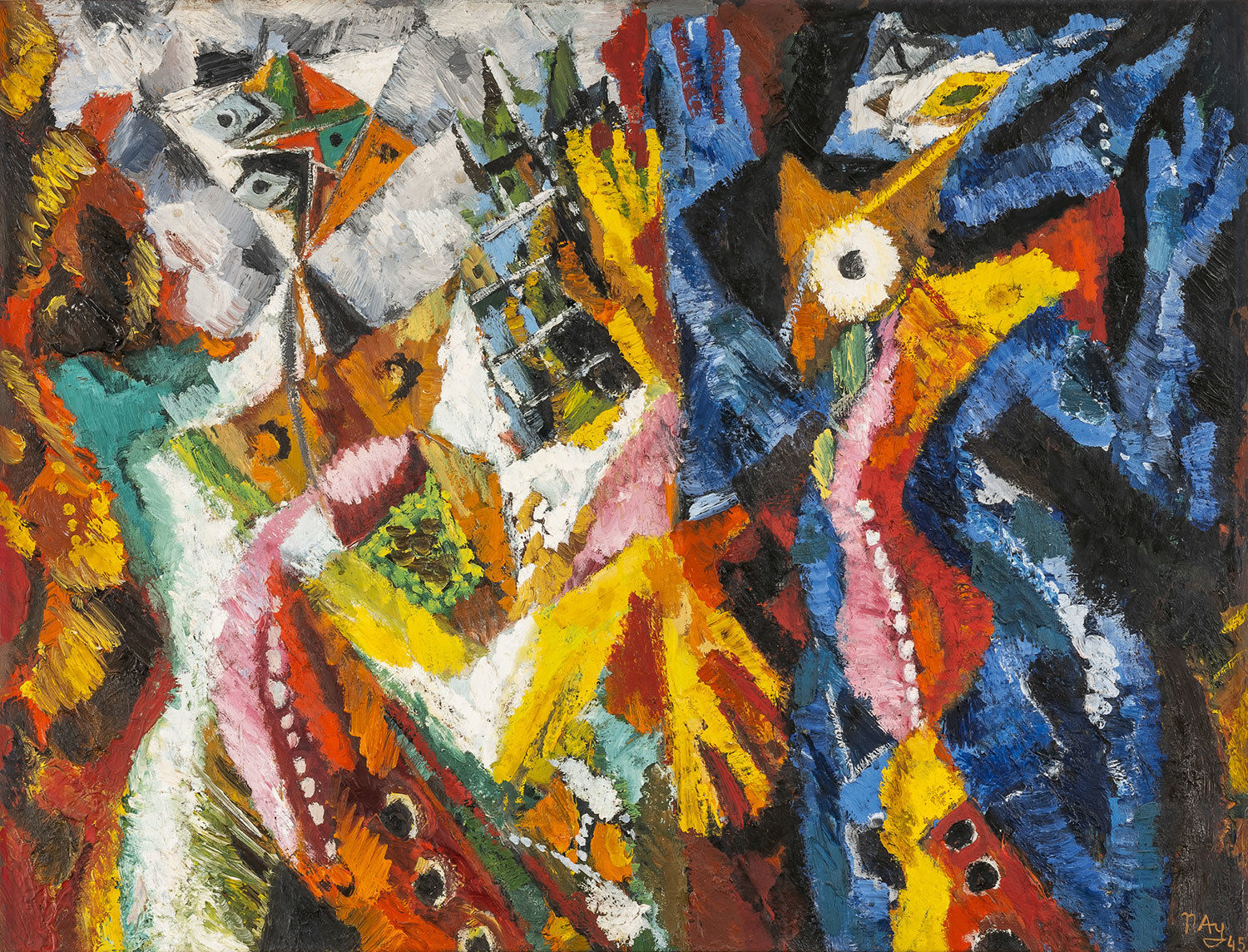
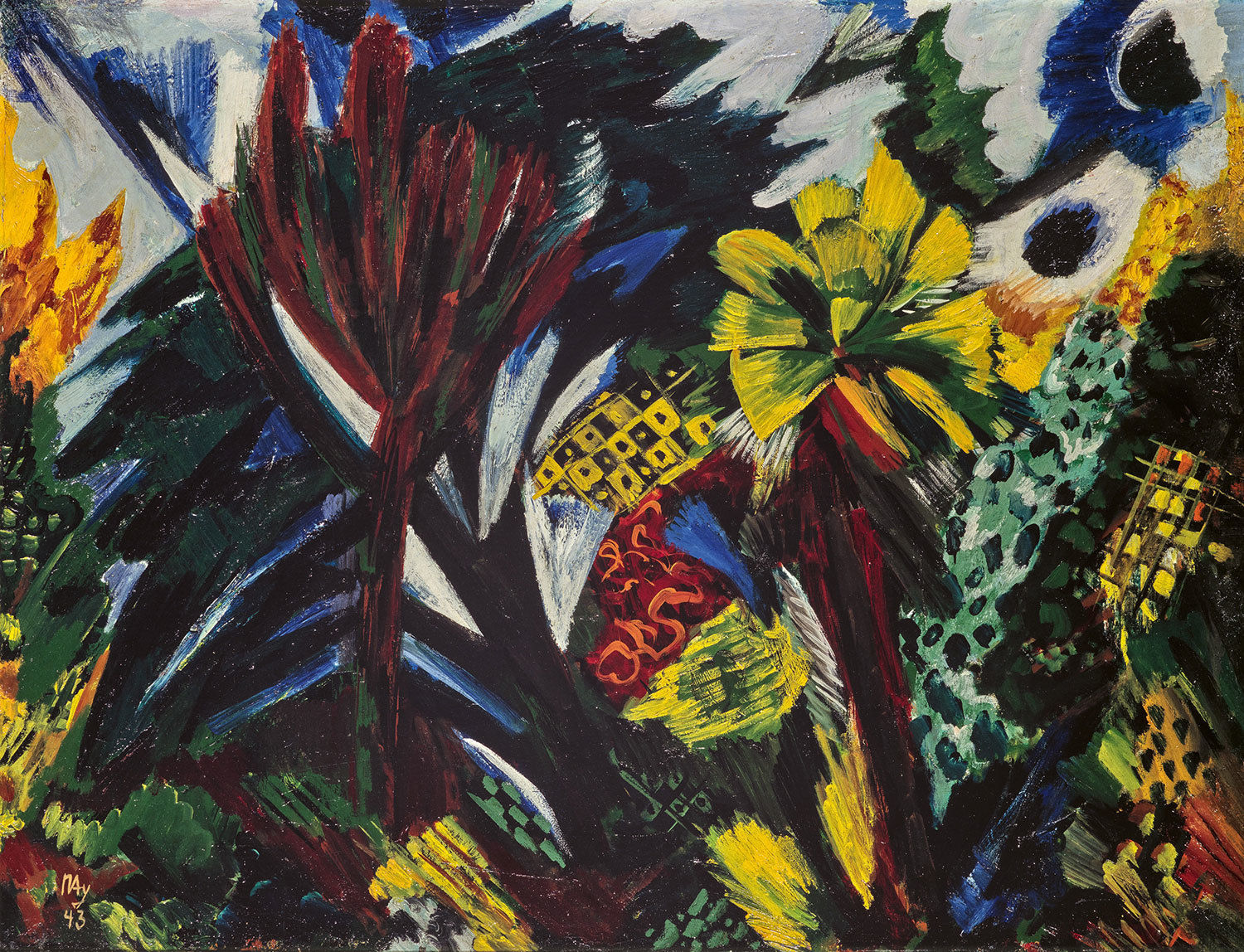
Released from the army in May 1945, Nay retreated to Hofheim am Taunus, where his friend Hanna Bekker vom Rath found him a studio house. He now applied the colors thickly and with moving brushstrokes, thus giving his depictions great liveliness.
He found inspiration for this in the Bible and in the myths of Greek antiquity. In the mysterious Hekate paintings (named after the goddess of magic) he depicted situations of transformation as well as an idyllic existence in nature. The quiet Hofheim, where Nay was extraordinarily productive for six years until 1951, after the horrors of the war the ideal place: "I have the whole cottage for myself, it is located above the small town with a wide view over the Maine plain to the Odenwald," he wrote to a friend. And further: "You will say, there may still be something like [a] paradise there."
Melodics of colors
Fugals and Rhythmic Images
Nay found inspiration in the fugue, a form of musical composition in which different voices are offset in time, yet sound together: By looping, repeating, or reversing areas of color, he created dynamic bands and rhythmic sweeps in his paintings. They often circle around black dots and visually create movement. The content of the picture can hardly be grasped, and yet last memories of figures are present.
In 1951 Nay moved to Cologne. The liveliness of the big city was reflected in the "Rhythmic Pictures," his first completely abstract works.
The interplay of form, line and color now appeared freer, even more dynamic - inspired by works of New Music. At times the previously strict contours became blurred and frayed, which in effect - for example in pictures like "Glanz vom grünen Feuer" or "Orange merkurisch" — almost amounted to an all-over, but Nay soon returned to a more planned methodology.
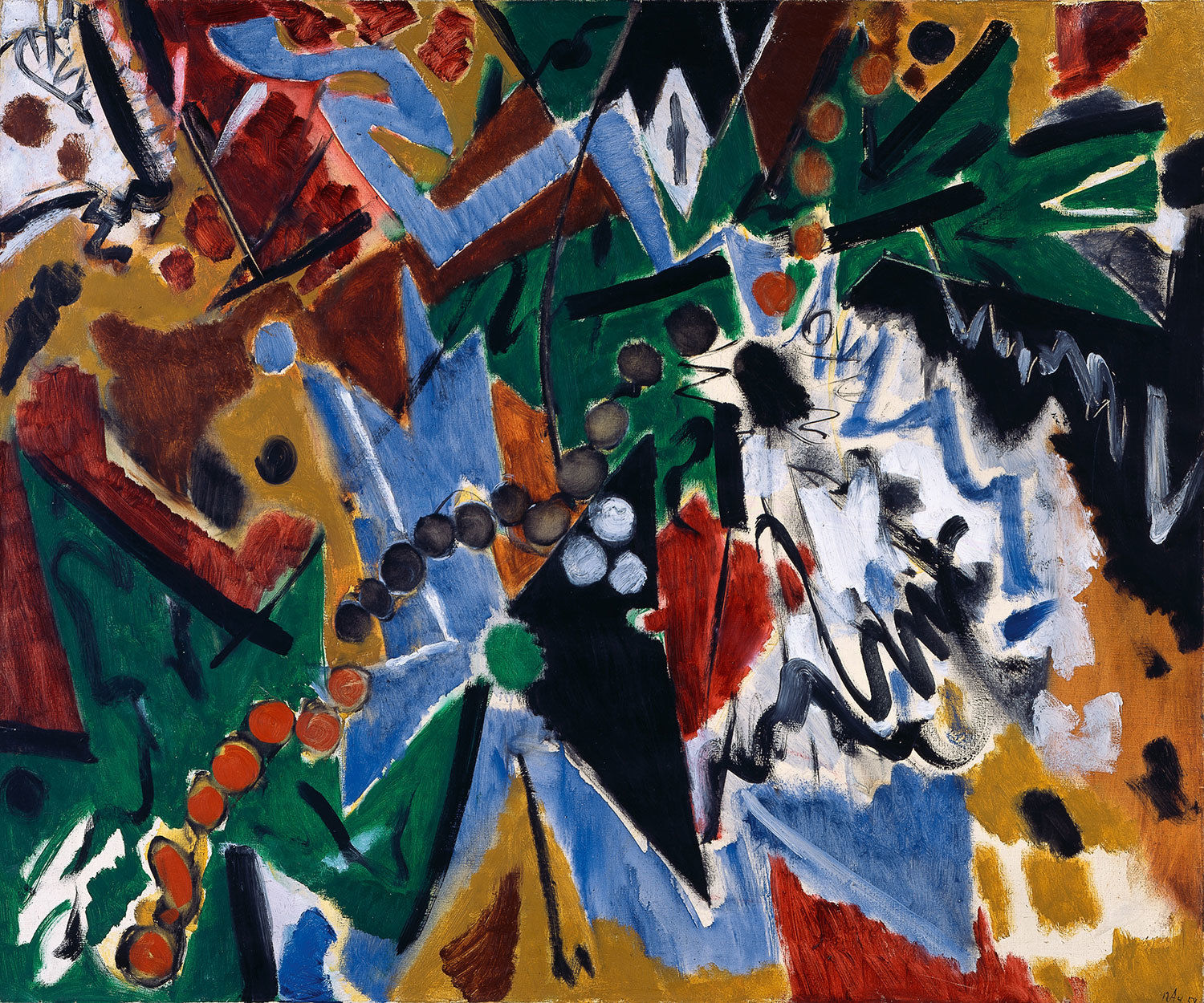
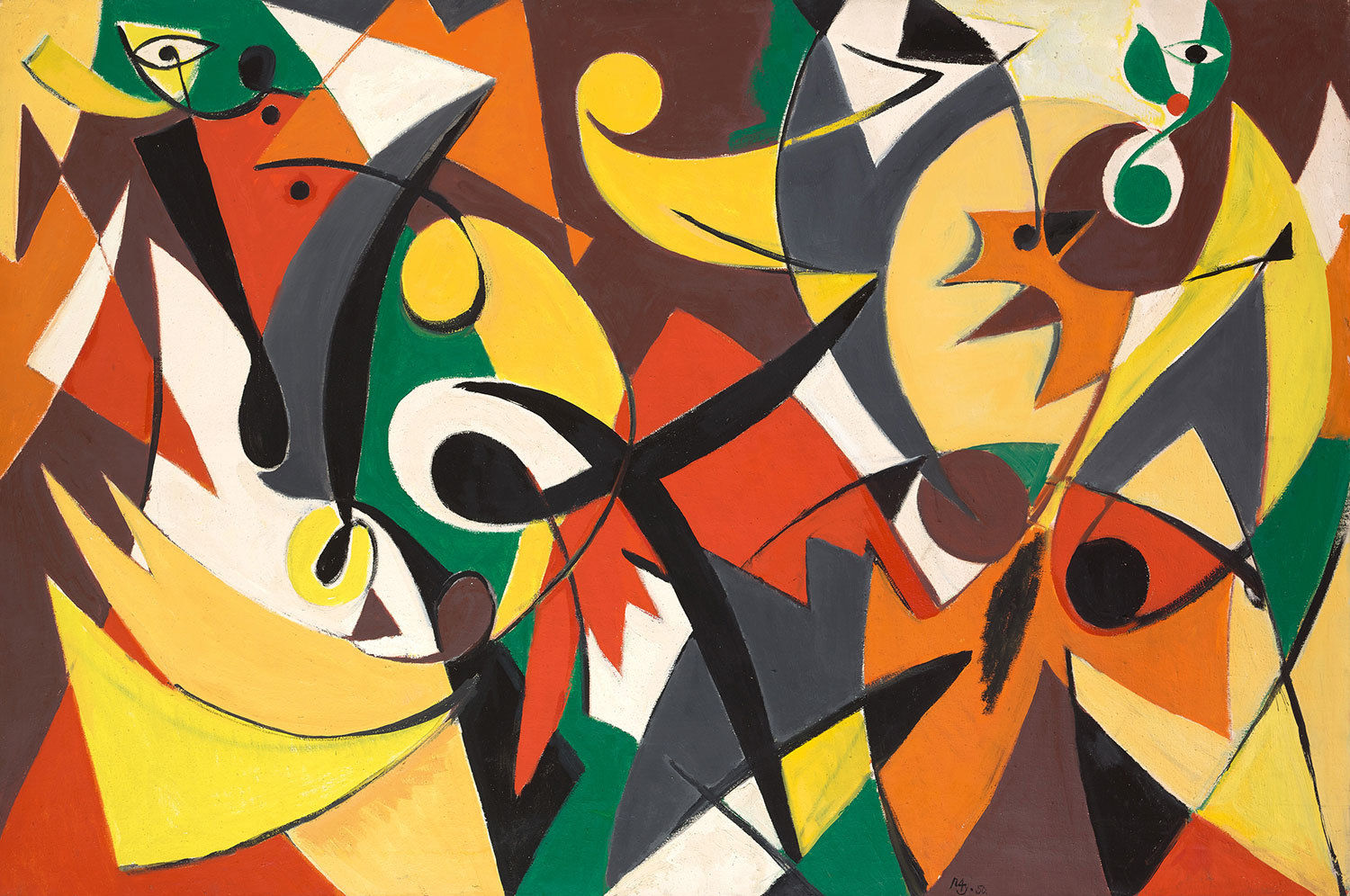
"Color is design value for me. I not only give color priority over other pictorial means, but the entire pictorial activity of my art is determined solely by the colorful design."
Ernst Wilhelm Nay, 1952
In the fall of 1953, he also took on a three-month teaching position at the Landeskunstschule Hamburg: While the painter had initially only formulated principles of working for himself, he now based his teaching on these. In 1955, his art-theoretical work "Vom Gestaltwert der Farbe" (On the value of color as a form) was published.
With the "Hekate Pictures" Ernst Wilhelm Nay had laid an important foundation for his further work. But only a few years later he reconsidered his pictorial means. In the "Fugal Paintings", which he began to create in 1949, the small-scale, dense and impasto painting was now more generous, more contoured and gained in two-dimensionality.
Abstraction and content
Disc images, Eye images and Late images
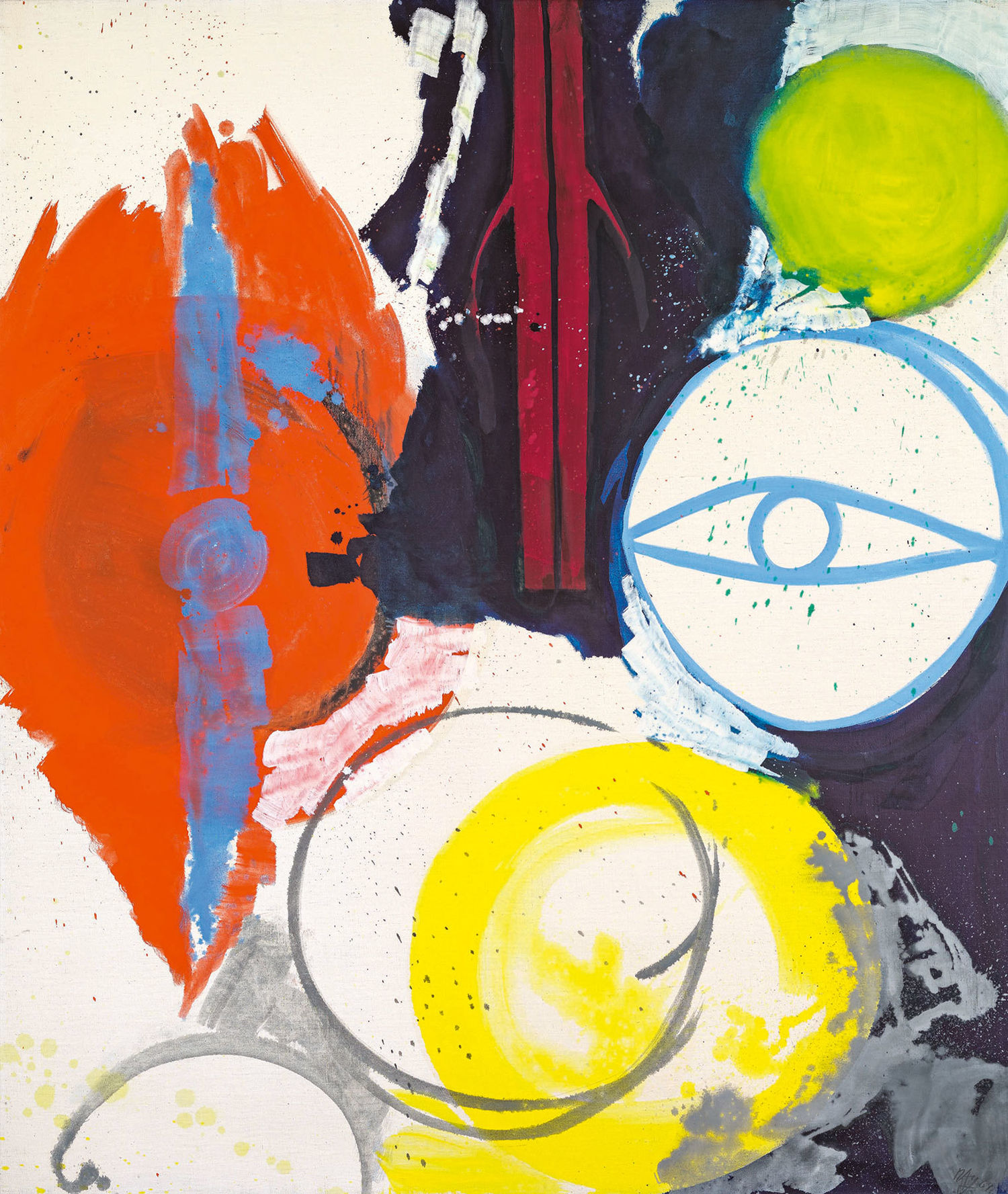
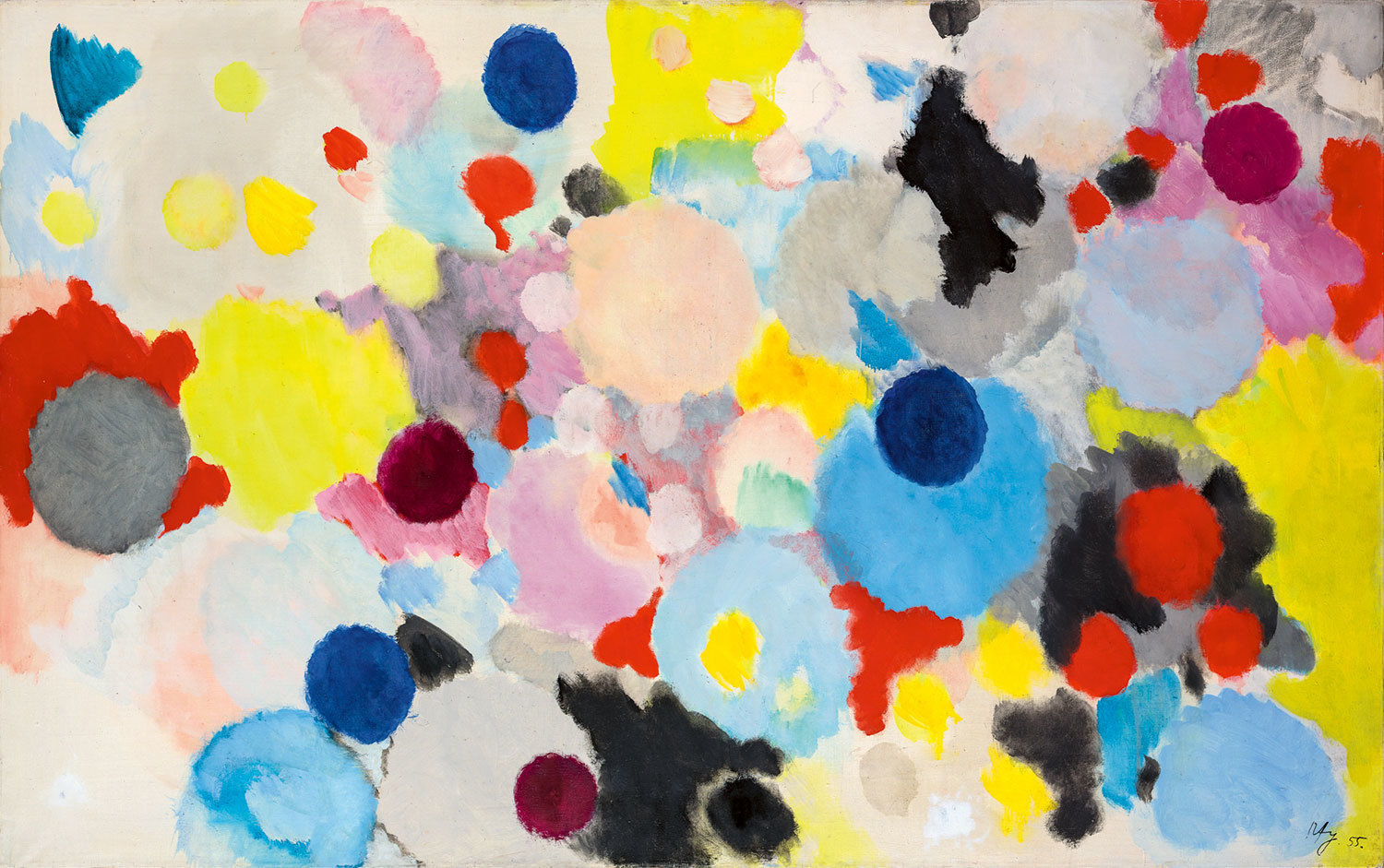
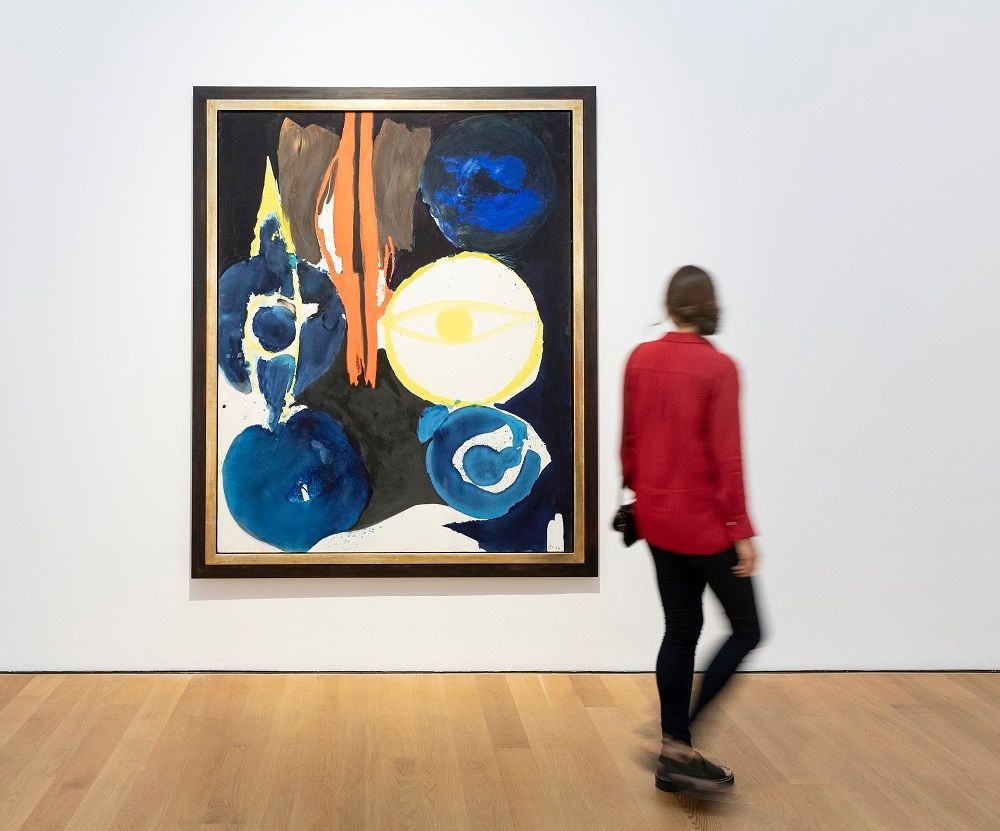
All sciences fascinated Nay, especially mathematics and physics. Albert Einstein
had proven that space, time and matter were not fixed but variable quantities. There was now no longer a single, correct view of the world, but many possible points of view. In addition, Nay also wanted to depict spatial relationships, and in the process he discovered for himself the motif of the disc.
In the 1950s, he created numerous images reminiscent of outer space from superimposed discs. Contrasts of dark-light or warm-cold colors set them optically in vibration. They seemed to swirl, dissolve, or push beyond the edges. Nay laid hatchings and pointed ovals over his circles and in 1963/64 developed paintings in which huge eyes seem like magical signs. Three of these works were placed on the ceiling at "documenta III" in Kassel in 1964, sparking a major discussion about the general content of his works.
Today there is no question that although many of Nay's paintings appear to be non-objective, he has always included man and his position in the universe in his multi-layered art.From 1965 onwards, Nay simplified his painting even more: from a few intensive colors and he developed pictures with mostly vertically running elements. They, too, seem free of objects at first, but are not infrequently reminiscent of bodies, limbs, hands, or eyes.
Until the end, Nay kept his art in the balance between figure and abstraction.
Late pictures
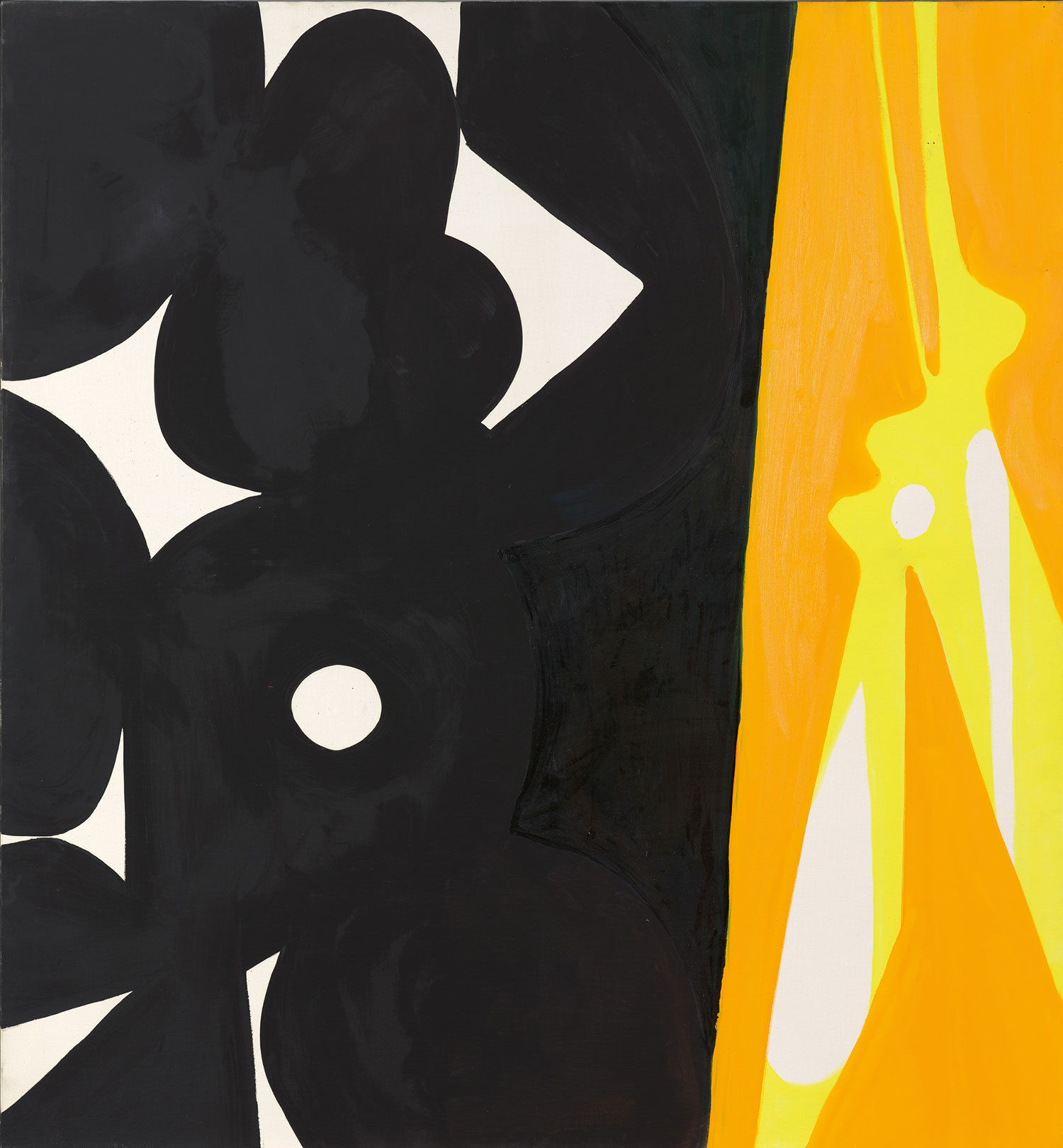
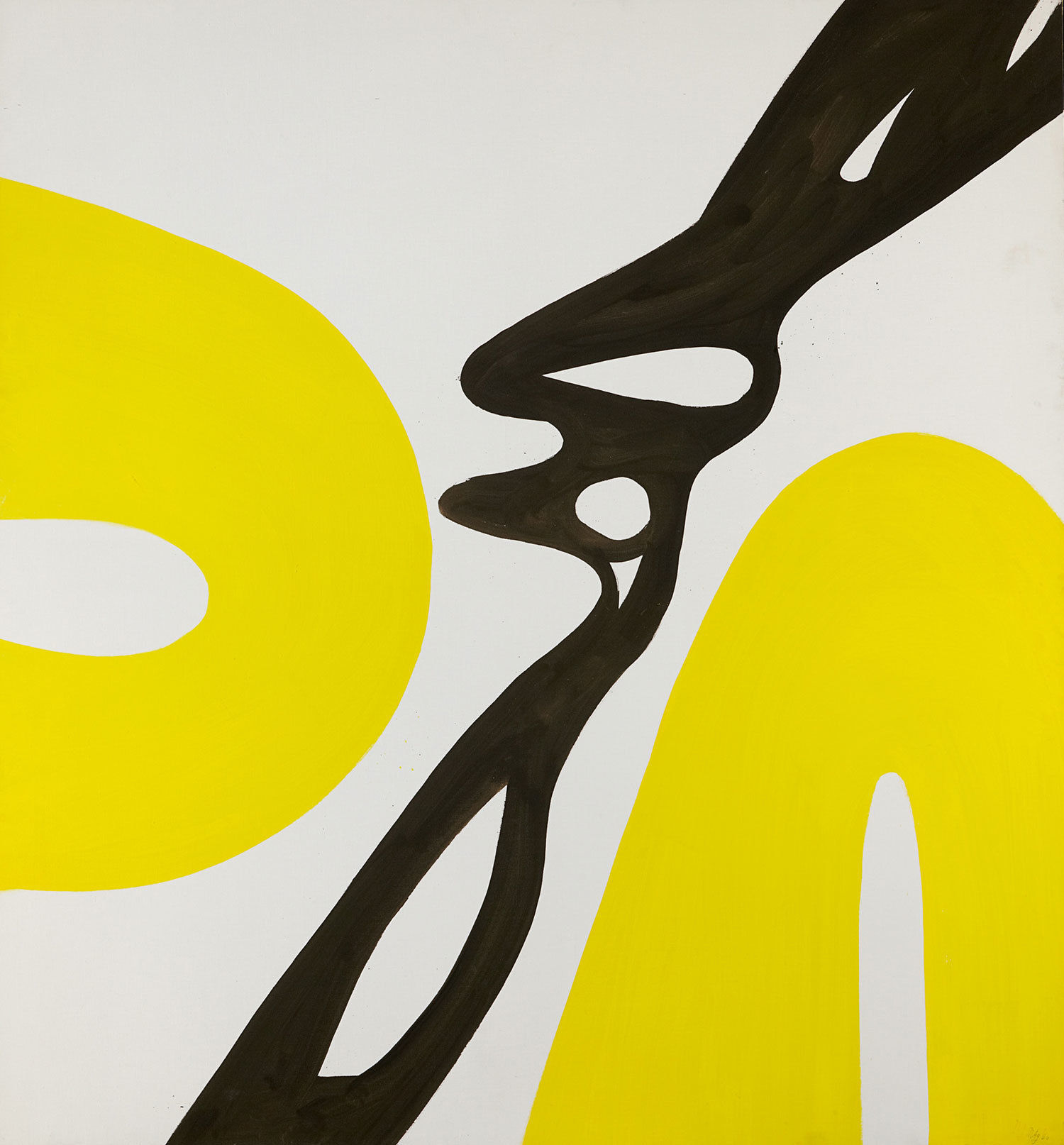
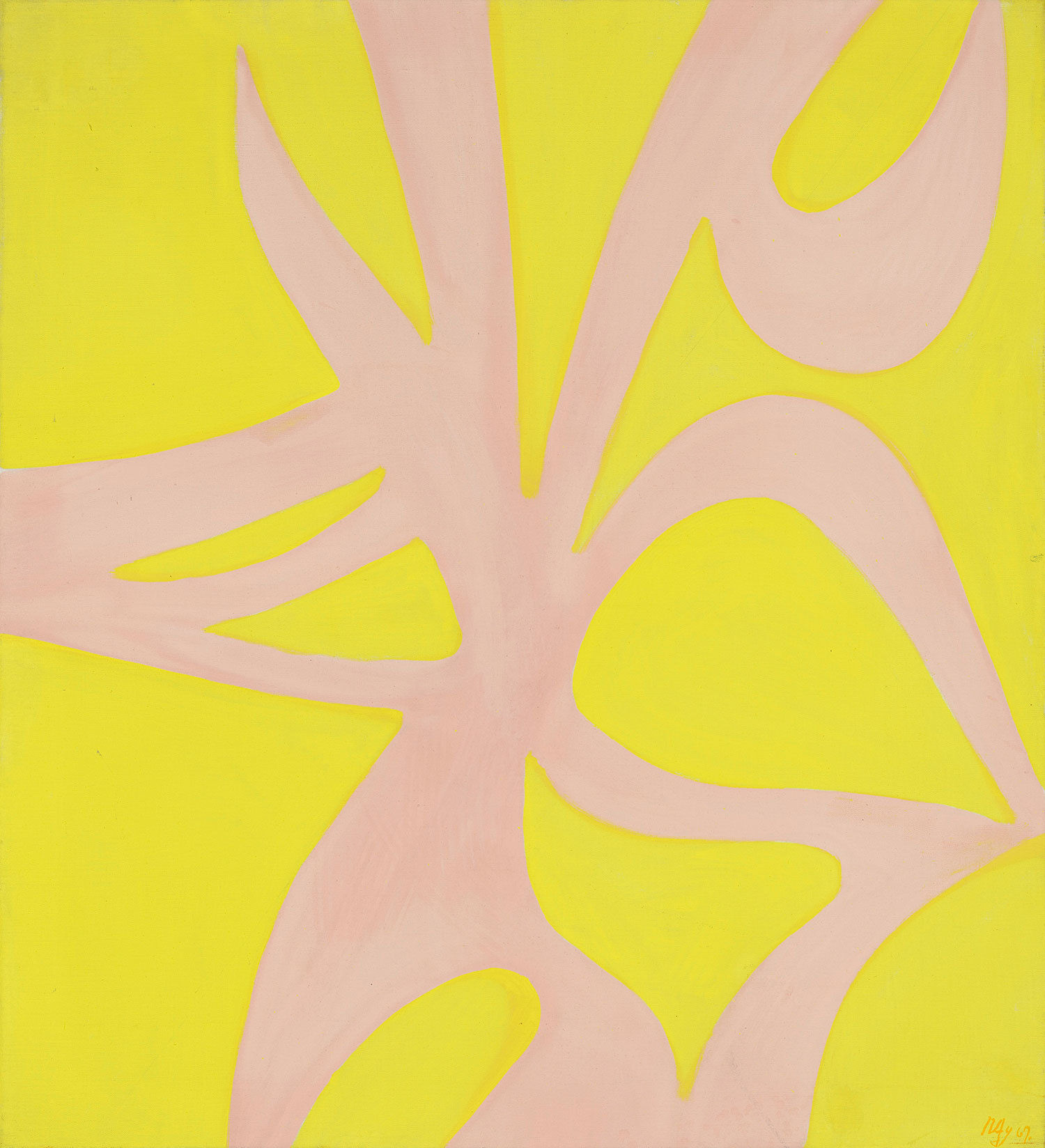

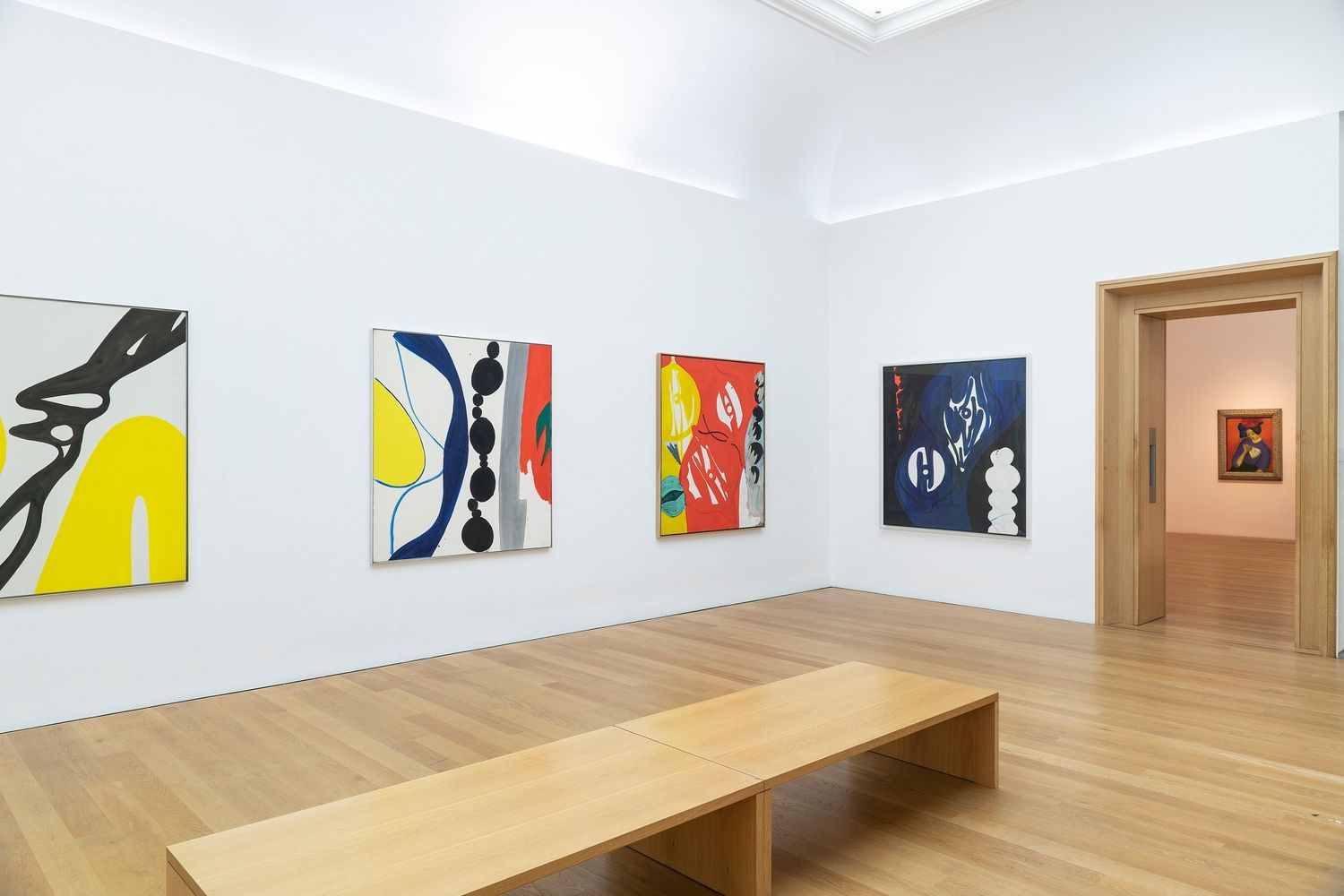
An exhibition curated by the Hamburger Kunsthalle in association with the Ernst Wilhelm Nay Stiftung, Museum Wiesbaden, and the Museum Küppersmühle für Moderne Kunst, Duisburg
Biography
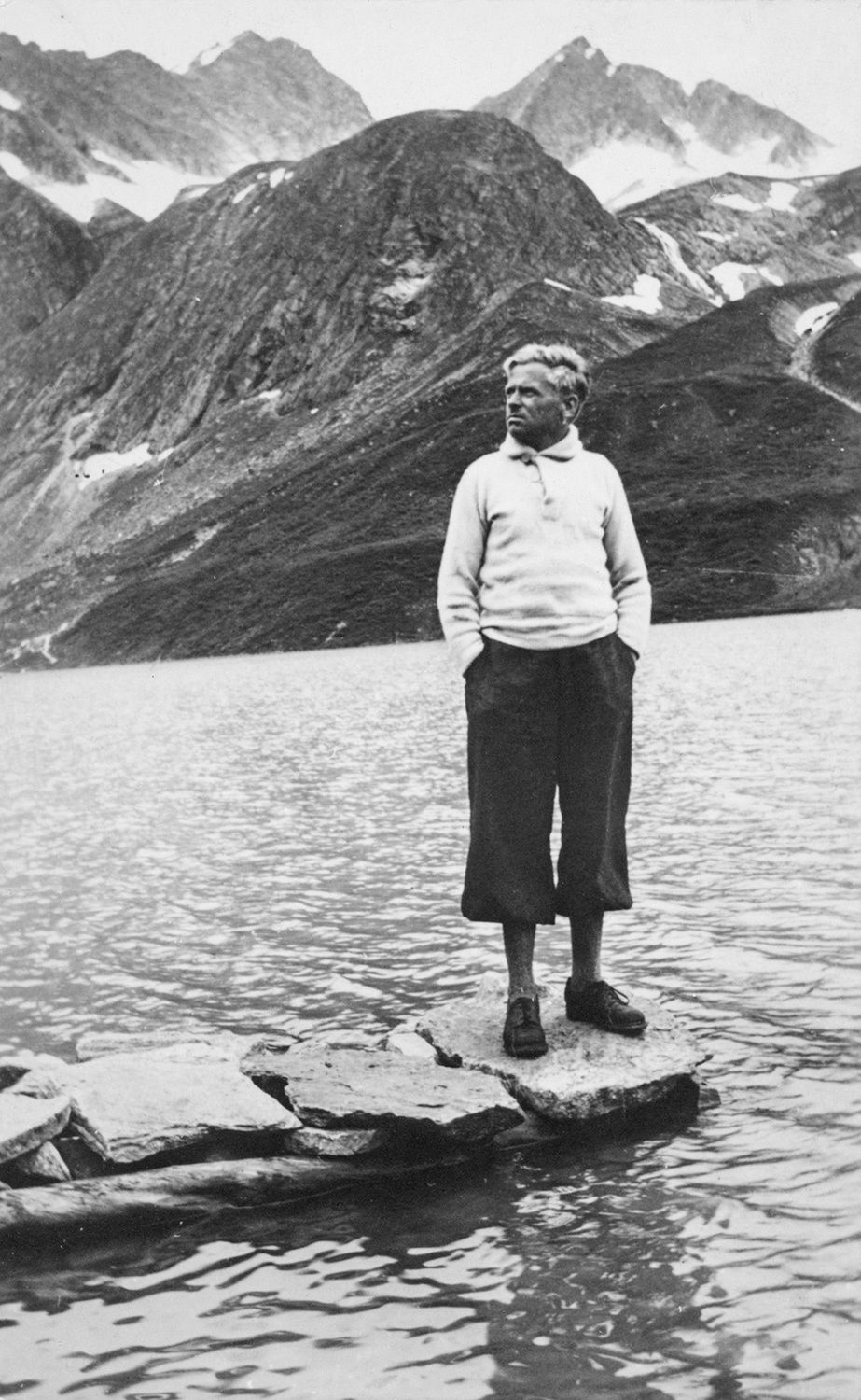
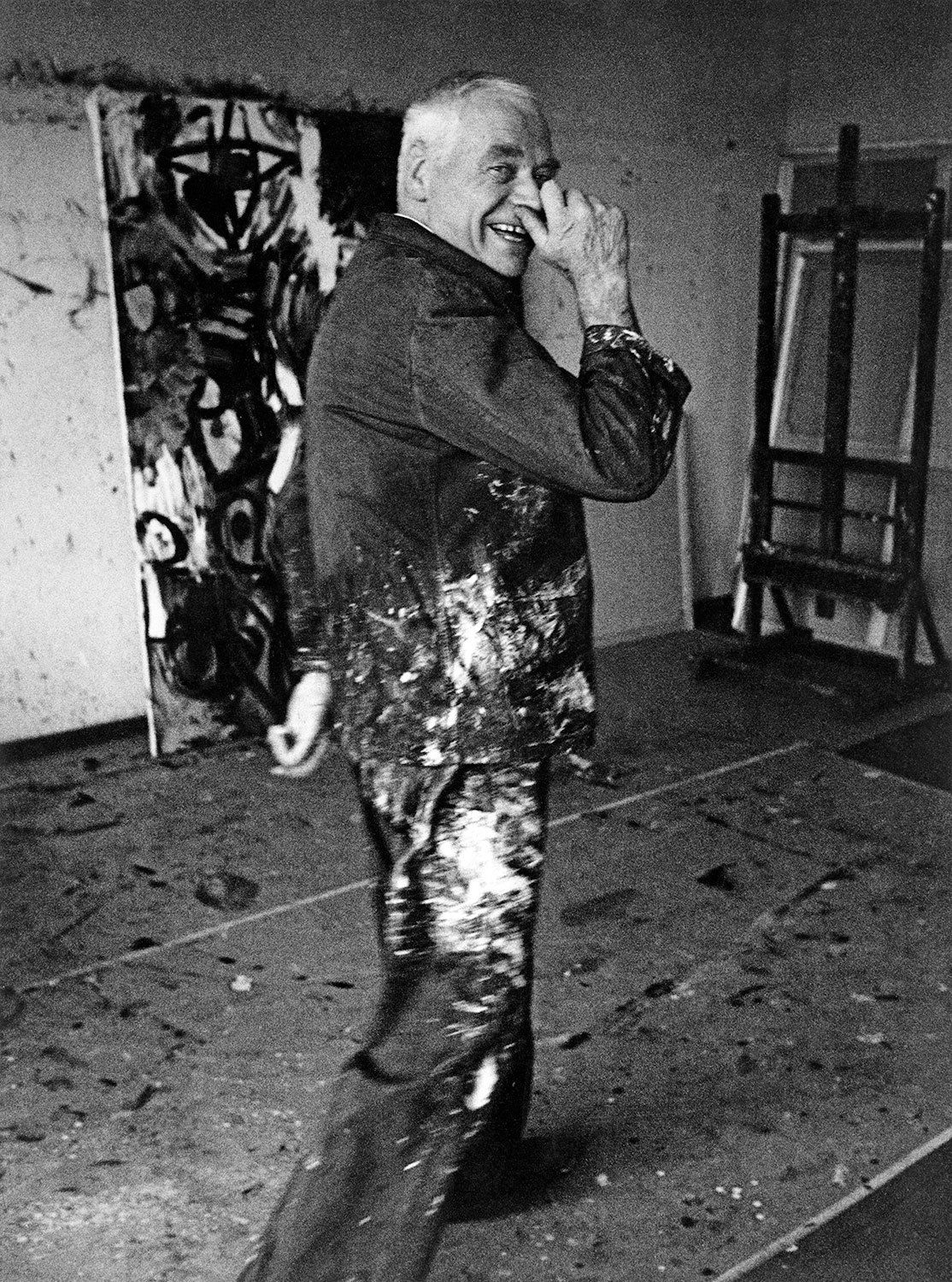
Berlin, Paris, Rome | 1902—1932
Ernst Wilhelm Nay was born in Berlin on June 11. After graduating from high school in 1921, he begins an apprenticeship at the Gsellius bookstore, which he soon abandons in order to intensify the painting he has recently begun. He attends evening classes in nude drawing at the Berlin Museum of Decorative Arts and in 1924 applies to Karl Hofer at the Hochschule für Bildende Künste, who accepts him into his painting class. While still with Hofer, he met the publisher of the magazine Das Kunstblatt, Paul Westheim, and his later great patron Carl Georg Heise, who worked as museum director in Lübeck. Heise acquired the Cauliflower Still Life, one of the artist's first paintings for a museum. By 1928, the end of his studies, he had already participated in group exhibitions in Berlin, Hanover and Munich. A trip to Paris followed, during which Nay became aware of current French trends, among other things. After the State Prize for Painting of the Prussian Academy of Arts (1930) follows the associated scholarship at the Villa Massimo in Rome (1931/32) — surreal paintings are created under the impressions previously gained in Paris.
Baltic Sea and Lofoten | 1933—1939
Nay gradually became acquainted with other great personalities of the German art scene: Hanna Bekker vom Rath, Ernst Gosebruch, Will Grohmann, Carl Hagemann, Werner Haftmann, Alfred Hentzen, as well as Erich Meyer. Several stays at the Baltic Sea (among others in the village Vietzkerstrand) lead to the dune and fishing pictures. With the rise to power of the National Socialists, Nay is soon banned from exhibiting, but receives subsidies for painting materials due to his temporary membership in the Reichskammer der Bildenden Künste. In 1937 he is represented with two paintings at the shame exhibition "Entarte Kunst". The Norwegian painter Edvard Munch and the collector Carl Hagemann, through the mediation of the now dismissed museum directors Carl Georg Heise and Ludwig Justi, finance two artistically productive trips to the Lofoten Islands (1937/38). With the paintings created there, his work noticeably picks up speed. Shortly before becoming a soldier, he visits Hanna Bekker in Hofheim and meets Alexej von Jawlensky in Wiesbaden, with whom he exchanges works.
France | 1940—1945
In December 1939 Nay enters military service. First Nay receives basic training in Schwerin at the Warte, then from May 1940 he is deployed as an infantryman in southern France and finally in Auray in Brittany. Initially, he is only able to make small watercolors and drawings during his off-duty time. Hans Lühdorf, a friend of Jawlensky, managed to get Nay transferred to Le Mans, where he worked as a cartographer. Here, in addition to a business trip to Paris, where he met Wassily Kandinsky in 1942, he was even allowed to use a studio of a French art friend, which is why he was now able to create paintings. At home in Berlin, his residential studio is destroyed in a bombing raid in 1943.
Hofheim am Taunus | 1945—1951
After Nay was released by the Americans, he arrives in Hofheim on May 21, 1945, where Hanna Bekker finds him the former studio of the painter Ottilie W. Roederstein. Here he created the Hekate and Fugal paintings, two important groups of works with which he attracted attention throughout Germany and internationally. He networked with museum directors in the Rhine-Main region — including Ernst Holzinger of the Städel in Frankfurt and Clemens Weiler of the Städtische Galerie in Wiesbaden, both of whom promoted him intensively. From 1946/47, he not only had solo exhibitions throughout Germany, including in Berlin (Galerie Franz), Düsseldorf (Galerie Vömel), Frankfurt (Kunstkabinett Hanna Bekker vom Rath), Hamburg (Kunstverein) and Munich (Günther Franke), but his works were also acquired by numerous museums. Nay's importance for German art after World War II can be seen in his early participation in the Venice Biennale in 1948, which was to be followed by many more (1950/1956 Venice as well as 1951/1955/1959 São Paolo). In 1950, Nay was not only presented for the first time in an American museum (Pittsburgh), but the Kestner-Gesellschaft in Hanover also organized the first retrospective.
Cologne | 1951—1968
In October 1951 Nay moved to Cologne, where he produced, among other works, the Rhythmic Pictures (1952—1954), the Disc Pictures (1954-1962), and the Eye Pictures (1963—1965). In 1952 the Haus am Waldsee in Berlin shows a retrospective on the occasion of Nay's 50th birthday. A year later, the painter took on a teaching position at the Landeskunstschule Hamburg. In 1955, this theoretical engagement led to Nay's widely acclaimed essay Vom Gestaltwert der Farbe (On the value of color as a form). In the same year he was invited to the first "documenta" in Kassel. Gradually he had more and more international solo exhibitions and participations, for example in London (Tate Gallery) in 1956, in New York (MoMA) in 1957, in Brussels (World Exhibition) in 1958, and he received many prizes and awards: the gold medal at the Italian Premio Lissone in 1953, the Lichtwark Prize in Hamburg in 1955, the Grand Prize of the State of North Rhine-Westphalia for Painting in 1956, and the Guggenheim Prize in New York in 1960. In 1959 and 1964 he again takes part in the "documenta". In between, the first major monographs by Werner Haftmann (1960) and Fritz Usinger (1961) appear. On a trip to the USA in 1962, Nay met the painters Mark Rothko and Robert Motherwell. In Germany, on his 60th birthday, he was given a retrospective at the Folkwang Museum in Essen. Between 1963 and 1968 Nay undertook many trips, including to Greece, Mexico City, USA (Chicago, New York, San Francisco), Morocco, Japan and Hong Kong, which is also reflected in his Late Paintings (1965—1968). In 1967 the artist is awarded the Great Cross of Merit of the Federal Republic of Germany. Nay dies of heart failure in his Cologne studio house on April 8, 1968.
